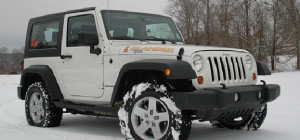Most roads and highways turn treacherous during the winter. Statistics show that the number of accidents escalates soon after snowfall starts. More than 70% of roads in the US are located in regions that receive above 5 inches of snow on average.
Driving during winter is hard, especially if you are behind the wheels of a heavy-duty truck. You need to remain concerned with so many things that driving for you is bound to be stressful. Understanding and implementing a few safety measures go a long way in ensuring that the drive is secure.
Here are the top driving tricks for heavy-duty trucks.
1. Ensure Proper Condition of Vehicle
Taking some time before beginning the trips and checking out on the condition of your vehicle can make a huge difference. Clean the snow and ice from the vehicle, especially the roof, hood, lights, trunk, and windows. Snow in any of these areas can affect your visibility substantially. Inspect the tires, wiper blades, and lights. Maintain at least half a tank of gas through the winter season.
2. Carry Winter Driving Kits
Make sure to keep your winter driving kit close and stock it with necessary things, including:
- Appropriate clothes (extra gloves, loose layers, rain gear)
- Batteries and flashlight
- Blanket
- Water and food
- First aid kit and prescription medicines
- Bag of salt or sand
- Extra washer fluid
- Jumper cables
- Windshield scraper and brush to remove snow
- Traction mats or tire chains
- Charger and cell phone
3. Unfreeze Pump to Cool the Engine
One of the greatest dangers of winter driving is the possibility of engine overheating. Low temperatures often cause the engine coolant to freeze, thereby preventing the pump from circulating it through the engine. Owing to this, the engine block often gets overheated and refuses to work.
Repairing this will not just cost a lot but may also leave you absolutely helpless if it suffers a breakdown in a secluded part of the road. Take steps to avoid such a situation.
4. Go Slow
Compensate for poor traction by increasing the following distance. Drive slowly and make the changes slowly too. If you go slow, you will get more time to react. Awareness and extra patience of the drivers prove extremely helpful during this time of the year.
5. Avoid Sudden Stops
Do not apply brakes or start all of a sudden. To slow down fast in slippery conditions, you can lightly pump the brakes using just the ball of your foot while keeping your heel on the floor. This brings down the chance of locking tires and losing control of your vehicle.
6. Allow yourself Extra Space in Front and Behind
To allow yourself enough room in an emergency, increase your distance from other vehicles. Do not drive in packs. The stopping distance required on the ice at 0°F is twice the amount that is needed at 32°F. The normal following distance needs to be increased while driving on slippery and icy surfaces. The sudden application of brakes can lead to loss of control. The additional distance you have been keeping should give you more time to see and maneuver the hazards and road obstacles.
7. Watch out for Black Ice
Black ice is a thin and transparent layer of ice that forms when the temperature is close to the freezing point. It usually makes the surface of the road appear like a puddle. Bridges, shaded spots, intersections, and overpasses are areas where ice is likely to form. Hazardous icy roads are extremely risky. So, watch out for these clues.
- Ice building upon the backs and mirror arms, antenna, or the top of the windshield.
- Roadside signs and trees have a frosting of ice through the surface of the road looks just wet.
- Water sprays from the tire of vehicles right in front of you stops suddenly; this indicates an icy patch.
8. Be Aware of Blind Spots
While you share the road with other truck drivers, be cognizant of the large blind spots. If you cannot see the truck driver in his mirror, the truck driver can’t see you either.
9. Concentrate on Driving
Remember that distracted driving is one of the prime causes of traffic accidents. Just a few seconds of distraction will double your chances of meeting with an accident. Never use your cellphone for texting or calling while driving.
10. Leave Early
Leave early to avoid the anxiety pertaining to arriving late at your destination. Starting early will also allow you to accommodate the potential unforeseen delays.
Observing these few safety strategies will go a long way in preventing untoward incidents while you are navigating your heavy-duty truck on the snow-covered roads in winter. But if you become a victim in an accident even after following these tips, get in touch with a truck accident attorney as soon as possible, so that he can guide you to get properly compensated.
Contributed by:www.texas-truckaccidentlawyer.com







